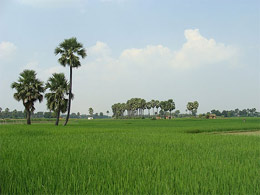The worst U.S. drought in more than five decades is forecast
to raise farm profits, not diminish them, to a record $122.2 billion this year,
as higher prices and crop insurance payments outweigh crop losses and livestock
production distress, the Department of Agriculture said Tuesday.
"It is a wild configuration," concluded Bruce
Johnson, agricultural economist at the University of Nebraska-Lincoln. But he's
not sure what looks on paper like a surprisingly good tradeoff will apply so
much to Nebraska.
"It remains to be seen," Johnson said. "This
is a national projection and to carry back to states means it will rattle
through a lot of different filters. I think the fact that the livestock
component is a pretty major part of our ag economy means it's highly questionable
that Nebraska would fare as well as the U.S. projections would look like."
The projected statistics are tilted to some degree by the
rush to market livestock that have little forage to graze on.
U.S. farm income will rise 3.7 percent from a revised $117.9
billion in 2011, USDA said. The value of crops will rise 6.7 percent to $222.1
billion, an all-time high, while revenue from livestock sales will decline 0.1
percent to $165.8 billion, the agency said. Expenses such as diesel fuel and
animal feed will rise 6 percent to $329.1 billion.
Inflation-adjusted net farm income will be the second-highest
since 1970, the agency said.
Those predictions in the middle of the worst drought many
adults have seen owe much to irrigation and to the safety net of crop
insurance.
"Payouts in terms of insurance premiums are going to be
astronomical, that's part of that," Johnson said. "In our part of the
country, the irrigation component of the economy is going to weather relatively
good. As the rest of the country is experiencing drought, commodity prices have
just shot through the roof."
Those higher grain prices will manage to outpace crop losses,
according to the agency.
Corn futures prices have surged 58 percent since mid-June
until Tuesday, soybeans were up 31 percent and wheat 41 percent. The drought
may push food inflation as high as 4 percent in 2012, the USDA said last week.
The department has declared natural disasters in more than 1,800 counties in 35
states, more than half of the country's total, mostly because of the dry, hot
weather.
"Despite the severity of the 2012 drought, shortfalls in
marketing-year production do not necessarily have a detrimental impact on
sector-wide farm income," the USDA said in the report. "Shortages
raise the prices farmers receive for crops sold in calendar year 2012, and crop
insurance partially offsets the impact of lower yields."
Farm-related income, which includes government-backed crop
insurance, will total $34.5 billion, compared with $26.1 billion last year and
$19.9 billion estimated in February, the USDA said.
Government-subsidized crop insurance payments, which at their
highest levels can cover 85 percent of anticipated revenue, will help crop
producers through this year. The benefit is unavailable for livestock producers,
who are being forced to thin their herds to raise income and lower costs from
high-priced feed.
Crop subsidies, not including insurance assistance, may rise
6.3 percent this year to $11.1 billion, the USDA said. That assumes that the
benefits will continue beyond Sept. 30, when the current farm bill expires. The
Senate and the House Agriculture Committee have approved bills that would
eliminate about $5 billion in annual subsidies paid directly to farmers while
boosting other support programs by smaller amounts.
Among farmers' costs in 2012, feed, the biggest single
component of farm spending, is projected to increase 13 percent to $61.8
billion, the largest increase in any category except labor.
Higher corn and hay expenses are forcing some ranchers to
sell animals for slaughter sooner than usual, creating a short-term supply
glut, but a smaller herd in the long term.
Agriculture Secretary Tom Vilsack said while strong farm
income will help many farmers and ranchers through the drought, "it is
important to remember that thousands of farm families, particularly livestock
and dairy producers, continue to struggle."
Vilsack repeated his call for Congress to pass a new farm
bill that will provide "more certainty" for agricultural producers.











